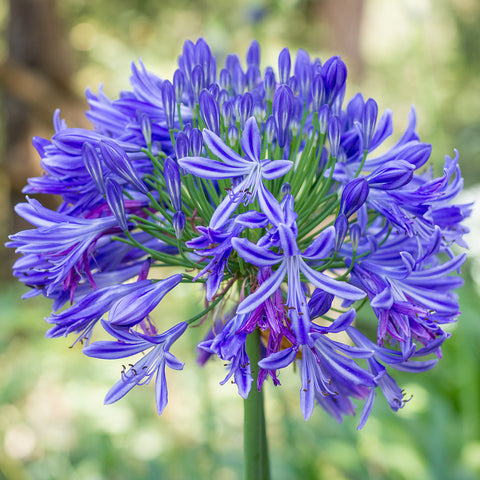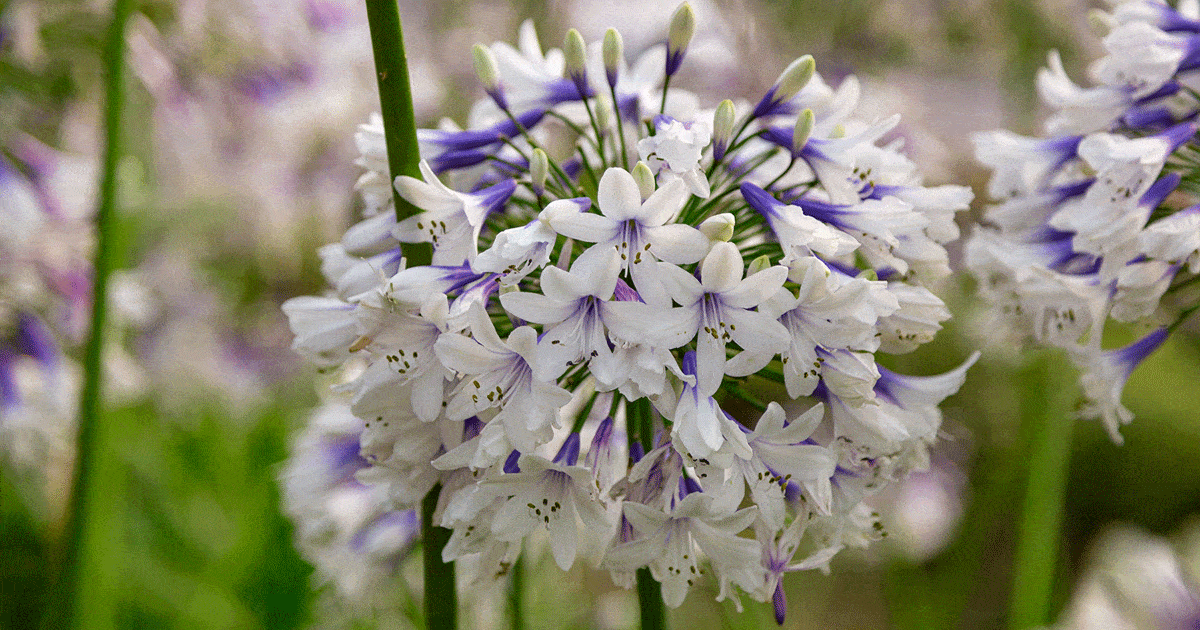Agapanthus Growing Conditions: Soil, Sunlight, and Watering
Agapanthus Growing Conditions: Soil, Sunlight, and Watering
Blog Article
Letting Loose the Secret to Successful Agapanthus Farming: Tips and Tricks for a Flourishing Garden
In the realm of gardening, growing agapanthus effectively calls for a tactical method that incorporates various elements of plant care. By comprehending the subtleties of agapanthus growing, one can create a setting where these plants prosper and flower generously.
Planting Agapanthus: Ideal Practices
When planting Agapanthus, appropriate dirt preparation is crucial for making sure effective growth and advancement of these stunning flowers. Agapanthus, typically referred to as Lily of the Nile or African lily, prospers in well-draining soil with a slightly acidic to neutral pH level - Agapanthus. Prior to growing, it is important to amend heavy clay dirts with natural issue such as compost or peat moss to enhance water drainage and offer necessary nutrients for the plants
To plant Agapanthus, pick an area that gets complete sunshine to partial color, as this will promote healthy growth and plentiful blooming. Dig an opening twice the size of the plant's root sphere and position the Agapanthus at the very same deepness it was formerly growing. Carefully backfill the hole with dirt, pushing down securely to remove any kind of air pockets around the roots.
Water the newly planted Agapanthus extensively and continue to keep the soil uniformly damp, specifically throughout the plant's energetic growing season. Agapanthus. Applying a well balanced fertilizer once a month can further sustain the plant's growth and blooming. By following these ideal techniques for growing Agapanthus, you can produce a sensational screen of these fascinating flowers in your yard
Perfect Dirt Conditions for Agapanthus
For optimal growth and growing success of Agapanthus plants, guaranteeing the dirt problems are perfect is essential. Agapanthus thrives in well-draining dirt with a slightly acidic to neutral pH degree varying from 6.0 to 7.0. This sort of dirt allows for appropriate water drainage, avoiding waterlogging which can cause root rot. To boost soil water drainage, take into consideration adding natural matter such as compost or peat moss when preparing the planting site. Furthermore, Agapanthus likes dirt that is rich in nutrients, so incorporating a balanced plant food during the expanding period can advertise healthy and balanced growth and vibrant blooms.

Watering and Fertilizing Tips
To guarantee healthy and balanced growth and lively blossoms, correct watering and fertilizing strategies are necessary for effective Agapanthus farming. Agapanthus plants benefit from normal watering, specifically during the expanding period. It is advised to water deeply once a week, guaranteeing the soil is moist but not waterlogged. Throughout heat or in pots, even more regular watering might be needed to protect against the soil from drying out completely.
When it pertains to feeding Agapanthus, a balanced fertilizer with equivalent components nitrogen, phosphorus, and potassium can be used in the springtime to advertise healthy and balanced development and blooming. Slow-release fertilizers are perfect for supplying nutrients progressively over an extended period. Prevent over-fertilizing, as this can bring about too much vegetation development at the expense of blooms.
In addition, integrating discover this info here natural matter like garden compost into the soil can enhance nutrient levels and boost soil framework, helping in the total health and wellness of the Agapanthus plants. By adhering to these watering and fertilizing pointers, garden enthusiasts can ensure their Agapanthus plants thrive and create spectacular displays of blossoms.
Trimming and Deadheading Strategies
Correct trimming and deadheading methods play a crucial role in maintaining the wellness and appearances of Agapanthus plants, matching the vital techniques of watering and feeding for successful farming. Pruning Agapanthus includes eliminating invested blossom heads, yellowing or dead fallen leaves, and overall shaping of the plant to promote better growth. Deadheading, the process of getting rid of faded flowers, not only enhances the plant's look but likewise urges more growing.
When deadheading Agapanthus, it is a good idea to snip off the blossom stem at the base utilizing sharp, tidy shears. This procedure reroutes the plant's energy from seed production back right into root and vegetation development, advertising a much healthier and a lot more durable plant. Normal deadheading can extend the flowering period of Agapanthus and prevent self-seeding, which can cause overcrowding.
In terms of trimming, Agapanthus typically advantages from a light trim after blossoming to clean the plant and urge fresh development. Cutting down the spent flower stems and removing any kind of broken or dead vegetation assists keep the plant's vitality and total look. Nevertheless, it is important to avoid reducing right into the crown of the plant, as this can damage its health.

Protecting Agapanthus From Pests and Diseases
Implementing effective insect and condition monitoring techniques is essential to guarding the health and vigor of Agapanthus plants in growing. Agapanthus are generally durable plants, however they can still succumb to different pests and conditions otherwise correctly cared for. One usual parasite that affects Agapanthus is the Agapanthus borer, a caterpillar that passages into the plant, triggering damage to the flowers and fallen leaves. To avoid infestations, normal assessment of the plants is important. If borers are detected, they can be manually gotten rid of, or insecticidal soap can be utilized as a control measure.
Along with parasites, Agapanthus are susceptible to illness such as root rot and fungal fallen leave places. These concerns can typically be avoided by ensuring appropriate drainage and preventing overwatering. If indicators of disease appear, impacted components of the plant ought to be without Visit Your URL delay gotten rid of to stop more spread. Fungicides might also be utilized as a treatment action, adhering to the producer's instructions meticulously. By remaining vigilant and addressing insect and illness concerns promptly, garden enthusiasts can assist their Agapanthus flourish and thrive.

Conclusion
To conclude, successful growing of agapanthus calls for appropriate planting strategies, ideal dirt conditions, ample watering and fertilizing, routine pruning and deadheading, and protection from diseases and parasites. By complying with these tips and techniques, gardeners can make sure a flourishing garden loaded with stunning agapanthus blossoms. Agapanthus. Remember to preserve constant treatment and focus to detail to promote the wellness and long life of these sensational plants
When growing Agapanthus, correct dirt preparation is necessary for ensuring successful development and growth of these attractive flowers.Water the newly grown Agapanthus extensively and proceed to maintain the soil equally moist, especially throughout the plant's energetic growing period.For ideal development and growing success of Agapanthus plants, ensuring the soil conditions are excellent is vital. When hair transplanting or growing Agapanthus, make sure the dirt is well-prepared to supply the required foundation for the plants to establish themselves effectively. One typical parasite that impacts Agapanthus is the Agapanthus borer, a caterpillar that passages right into the plant, triggering damage Your Domain Name to the leaves and flowers.
Report this page